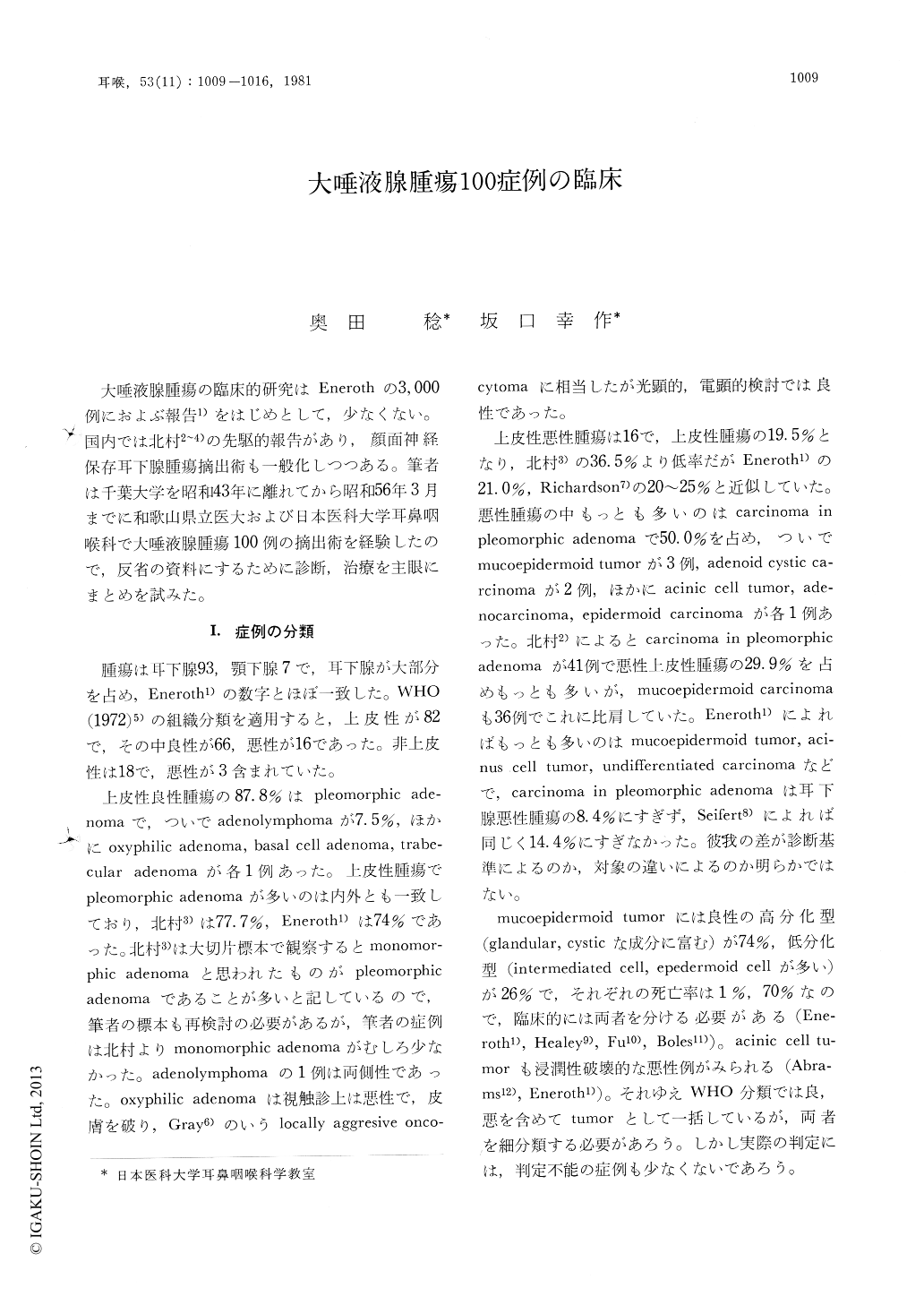Japanese
English
- 有料閲覧
- Abstract 文献概要
- 1ページ目 Look Inside
大唾液腺腫瘍の臨床的研究はEnerothの3,000例におよぶ報告1)をはじめとして,少なくない。国内では北村2〜4)の先駆的報告があり,顔面神経保存耳下腺腫瘍摘出術も一般化しつつある。筆者は千葉大学を昭和43年に離れてから昭和56年3月までに和歌山県立医大および日本医科大学耳鼻咽喉科で大唾液腺腫瘍100例の摘出術を経験したので,反省の資料にするために診断,治療を主眼にまとめを試みた。
From the point of view of diagnosis and treatment, one hundred patients with major salivary gland tumors were studied, and the tumors were histologically classified as 82 epithelial and 18 non-epithelial tumors, or as 66 benign and 16 malignant. The most frequent tumors were pleomorphic adenoma among the epithelial benign tumors, carcinoma in pleomorphic adenoma among the epithelial malignancies, and angioma among the non-epithelial tumors.
In order to differentiate salivary gland tumors from non-tumor diseases, or if diagnosed as tumor, benign from malignant, and to diagnose the location of tumor in the glands, sialography especially tomographic sialography was emphasized to be indispensable.
Surgery was the first choice for treatment but the methods were varied according to the nature of tumors. For parotid benign tumors extracapsular removal with facial nerve preservation was the principal method, occasionally associated with lobectomy, hemilobectomy or subtotal parotidectomy. The results were satisfactory without any recurrence. On the other hand, for parotid malignancies radical or extended radical parotidectomy were mainly performed, and were, if necessary, followed by 7000 rad of 60 Cobalt irradiation. The facial nerve thus sacrified was repaired by the techniques of nerve transplantation or end-to end anastomosis. Four of 16 patients died due to distant metastasis or local recurrence. For all submandibular gland tumor total resections of the submandibular gland were perfomed without any recurrence.

Copyright © 1981, Igaku-Shoin Ltd. All rights reserved.


